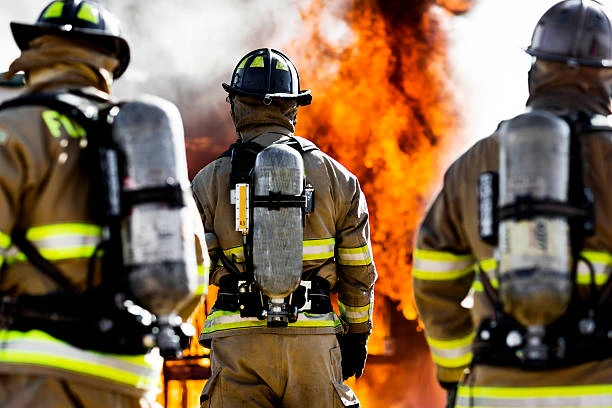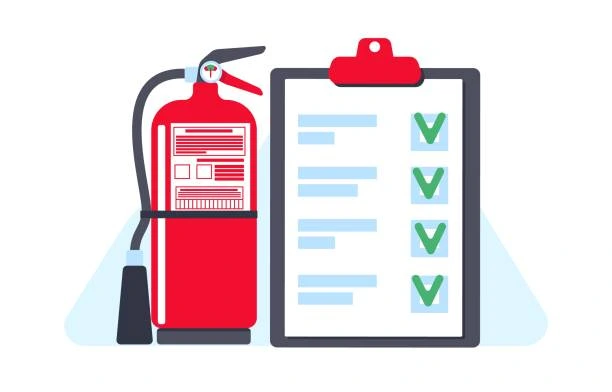Fire Safety Certificates for London Landlords: What You Need to Know
Fire safety is a critical aspect of property management, and it’s of paramount importance for landlords to ensure that their rental properties are safe for tenants. In London, where a diverse range of properties exist, understanding and adhering to fire safety regulations is crucial. This article will guide London landlords through the essential aspects of fire safety certificates, including the regulatory framework, fire risk assessments, types of fire safety certificates, and the responsibilities that come with them.
Understanding Fire Safety Regulations in London
London, like the rest of the UK, adheres to the Regulatory Reform (Fire Safety) Order 2005. This legislation places a legal obligation on landlords to ensure the safety of their properties concerning fire risk. Ignorance of these regulations is not an excuse, as non-compliance can lead to severe consequences, both legally and morally.
In the eyes of the law, the Regulatory Reform (Fire Safety) Order 2005 applies to almost all non-domestic premises, including shared areas in houses in multiple occupations (HMOs). It’s the landlord’s responsibility to carry out a fire risk assessment, which forms the basis for compliance with fire safety regulations.
Fire Risk Assessments
A fire risk assessment is a comprehensive evaluation of your property, focusing on fire hazards and how to manage them. Landlords should be fully aware of their responsibilities in conducting fire risk assessments. The assessment should be thorough, covering every part of the property to which tenants have access. This includes common areas and individual units.
The law stipulates that the landlord must appoint a “competent person” to conduct the fire risk assessment. A competent person is someone with sufficient training, experience, and knowledge about fire safety. Many landlords choose to hire a professional fire risk assessor to ensure the assessment meets all the required standards.
The frequency of fire risk assessments can vary, but it is generally recommended that they are carried out at least annually, or more often if significant changes are made to the property, or if concerns are raised.
It’s crucial to document and keep records of your fire risk assessment. These records not only demonstrate compliance with the law but also serve as a valuable reference for future assessments and safety improvements.
Learn More: Completing a Fire Risk Assessment: Who’s Responsible and Why
Fire Safety Certificates
Fire safety certificates are an integral part of ensuring that your property complies with fire safety regulations. These certificates are official documents issued by local fire and rescue authorities, confirming that your property meets the required fire safety standards.
There are two main types of fire safety certificates in London:
1. Fire Safety Certificate for Building Works: This certificate is necessary when you carry out structural alterations or build new premises. It ensures that the work has been completed in compliance with fire safety regulations.
2. Fire Safety Certificate for the Use of the Building: This certificate is required when a building is being used for any purpose other than dwelling, and the authorities want to ensure that it’s safe for the intended use. This includes commercial spaces, HMOs, and other non-residential properties.
To obtain a fire safety certificate, you need to apply to your local fire and rescue authority. The application process involves submitting detailed information about your property, including the fire safety measures in place. This can include information about fire alarm systems, emergency lighting, fire doors, and more.
Once issued, fire safety certificates are not indefinite. They typically have a lifespan of five years and need to be renewed to ensure ongoing compliance.
Common Fire Safety Measures for Landlords
As a landlord, there are several common fire safety measures you need to consider implementing to protect your tenants and ensure compliance with fire safety regulations:
Fire Detection and Warning Systems: Install smoke alarms, heat detectors, and fire alarms in your property. Ensure they are regularly tested and maintained to ensure they function correctly.
Emergency Escape Routes: Mark and maintain emergency escape routes. Make sure they are free from obstructions and well-lit.

Fire-Resistant Materials and Furnishings: Use fire-resistant materials in the construction and furnishing of your property. This can include fire-resistant doors, walls, and fire-retardant upholstery.
Fire Safety Equipment and Signage: Provide appropriate fire safety equipment, such as fire extinguishers and fire blankets, and place them in accessible locations. Additionally, use clear and visible fire safety signage to guide tenants in the event of a fire.
Training and Information for Tenants: Educate your tenants about fire safety in your property. Provide them with information about what to do in case of a fire, including evacuation procedures. Regularly remind them of these safety measures.
Key Considerations for High-Risk Properties
Certain types of properties pose higher fire risks than others, and as a landlord, it’s crucial to pay extra attention to these areas:
Properties with Multiple Occupancy: Houses in Multiple Occupations (HMOs) often have more tenants, increasing the potential for fire risks. Ensure that you have proper fire safety measures in place and that tenants are aware of evacuation procedures.
High-Rise Buildings and Tower Blocks: High-rise properties require special attention to fire safety due to their height and complexity. Adequate fire protection measures, such as fire-resistant cladding, are crucial.
HMOs (Houses in Multiple Occupations): HMOs are subject to specific fire safety regulations in London. Make sure you understand and comply with these regulations.
Retrofitting Fire Safety Measures: If you own an older property, consider retrofitting fire safety measures to bring it up to current standards. This may include upgrading electrical systems, installing fire doors, and enhancing fire-resistant materials.
Working with Tenants
Landlords should maintain open and effective communication with their tenants regarding fire safety:
Communication: Ensure that tenants are aware of fire safety measures in place. Provide them with written information on what to do in case of a fire.
Tenant Responsibilities: While it’s the landlord’s responsibility to maintain fire safety measures, tenants also have responsibilities. Ensure that they understand these responsibilities and carry them out.
Evacuation Procedures: Educate tenants on the property’s evacuation procedures. Conduct regular fire drills to ensure that everyone knows how to exit the building safely.
Handling Tenant Concerns and Complaints: Address any tenant concerns or complaints related to fire safety promptly. It’s essential to maintain a positive landlord-tenant relationship while ensuring safety.
Resources for London Landlords
To stay informed and compliant with fire safety regulations in London, landlords can access a variety of resources:
Official Government Websites and Resources: The official government websites provide comprehensive information about fire safety regulations and compliance.
Local Fire and Rescue Services: Local fire and rescue services can offer guidance, conduct inspections, and provide valuable resources for landlords.

Fire Safety Experts and Consultants: Consider consulting with fire safety experts and consultants who can provide tailored advice and assistance.
Read More: How Often Should You Review Fire Risk Assessments?
Conclusion
In conclusion, fire safety is a non-negotiable aspect of being a responsible landlord in London. Understanding the regulations, conducting thorough fire risk assessments, obtaining the necessary fire safety certificates, and implementing common fire safety measures are essential steps to protect your tenants and your investment. High-risk properties demand even more attention, and working closely with your tenants and learning from both successful and tragic case studies can help you make informed decisions. By utilizing available resources and staying proactive in your approach, you can navigate the complex landscape of fire safety in London and fulfill your legal obligations as a landlord.

